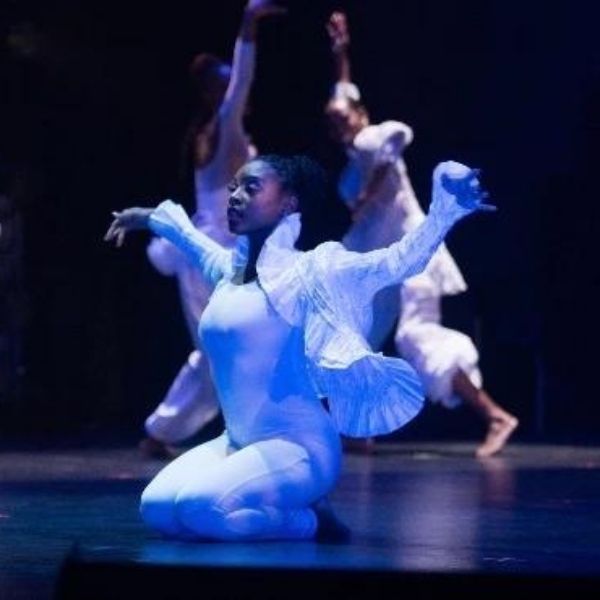Welcome back to the Dancer Blog. This week we’re gonna switch things up a bit. We started this blog by discussing why it is so hard for dancers to find a good healthcare provider. Check out Part 1 and Part 2. We discussed how unique dancers are from a biomechanical standpoint and why most healthcare providers are not well prepared to treat this unique patient population. This week, we’re flipping the tables and discussing why it’s so hard for healthcare providers to understand dancers. We’re gonna look at this not just from an education standpoint but from a dance as an industry standpoint as well.
Let’s start with dance as an industry. Compared to other athlete populations dancers and the dance industry is infinitely more complex and diverse. Yes, sports like football may have amature, college and professional levels but the difference between the three are simply the level of skill. Well that and several billions of dollars in advertising but I digress. The way you play the game of football changes very little between amature, college and professional. The rules are fundamentally the same and so is the technique. This is true of the vast majority of sports out there.
Compare this to dance, where there exists several different styles and techniques, each with their own set of biomechanical requirements. Ballet dance for example, is upright with a high center of gravity. Movement is done externally rotated and the dancer’s gait or walking pattern goes from toe to heel not heel to toe. Adversely, many Modern dance techniques challenge ballet aesthetics by inverting them. Modern dance is low towards the ground with an equally low center of gravity. Modern dance often features movement from a parallel position. Now consider that there are several dozens of different dance techniques. Such as; classical ballet, modern, post-modern, neo-classical ballet, jazz dance, tap dance, african dance, literally all of the social dance techniques such as; swing, tango, foxtrot, rumba, samba and so many more.
Each of the techniques I just named have their own biomechanical approach to movement and each requires a specific kind of training and predisposes dancers to different kinds of injuries. These injuries require different kinds of treatments and rehab based on the biomechanical approach to movement of that particular style. To make things even more complex, there is often a further difference between men and women in each technique as a not insignificant amount of dance is gender specific as far as movement and choreography goes.
All of this is to say that there is an incredible amount of variance in HOW dance is performed and therefore an incredible amount of knowledge a provider needs to understand in order to effectively treat dancers. Understand, the vast majority of dancers these days perform a variety of techniques. I myself regularly performed ballet, jazz, tap and modern dance techniques throughout my career. Many of those techniques I performed while with a single company. That means most dancers are well versed in several techniques and therefore require a provider that understands these different techniques. It’s not as simple as “I understand jazz, so I’ll treat jazz dancers.” A provider needs to know a lot! Essentially, treating a dancer as a patient is a lot like treating a sports player who plays every sport all at once.
Now that covers the dance industry as it relates to the dancer. But what about how the industry changes over time and how old styles are replaced with new ones. Well, similar to how there are many different dance techniques; ballet, jazz, modern etc. Within any given technique also exist several different styles. What’s the difference between technique and style? Well a technique is a collection of general rules and approaches to movement. Style is how a dancer represents a given technique.
For example, ballet is a technique and within ballet are several styles such as; Balanchine/American style, Vaganova, Cecchetti and several others. Each of these styles utilize the aesthetic of the ballet technique, this is the externally rotated legs, toe to heel walk and upright posture. HOWEVER, where Vaganova may focus more on elongated, slower movements utilizing extrinsic muscles, Balanchine focuses much more heavily on speed utilizing the smaller twitch muscles. What this means is that as a provider, it’s not enough to understand how a technique works. You additionally need to understand how the different styles work and what effects they have on a dancer’s body.
These different styles exist within every dance technique out there. And while the popularity of styles change over time and some styles are not as regularly performed, many dance styles still persist today. Using ballet as an example again, Balanchine, Vaganova and Cecchetti are still regularly performed. There are entire ballet companies that focus on one style over another while others are more of a fusion of several different styles. Again this creates an infinite amount of variance in the kinds of stress a dancer might be putting on their body. This creates infinitely more knowledge that a provider would need to know in order to treat that dancer.
Ok that was a lot for today but we’re not finished yet! Join me next week as we continue this discussion by examining the educational aspect of the equation. That is to say, why it's hard for healthcare providers to actually learn about dance. We’ll talk about the structure of healthcare education as well as dance research or rather lack thereof.
With that, it’s time for this weeks shout out! This week we’re featuring Maya Petty, pictured above. Maya is a graduate from Purchase College Conservatory of Dance. Maya has performed around the world dancing a variety of different styles and techniques. She is currently a company member with Forces of Nature Dance Theater out of New York City where she also teaches pilates. I’ve known Maya since her Purchase days so if you’re in NYC make sure to check out one of her performances!
And remember, if you have any questions or topics you would like me to address here on the Dancer Blog comment below and let me know! Also if you want to help this community grow faster, please like and share this blog on Facebook, Instagram, and Twitter. Until next time!





